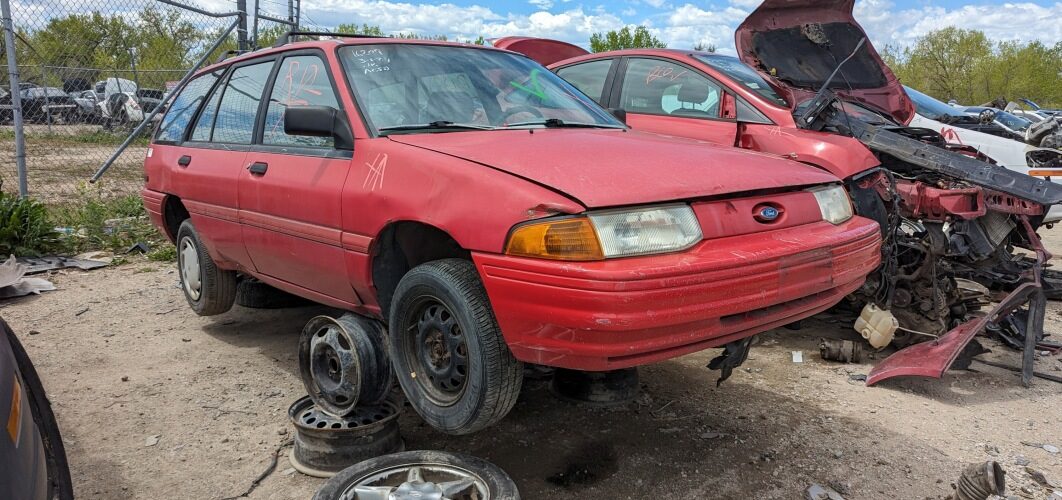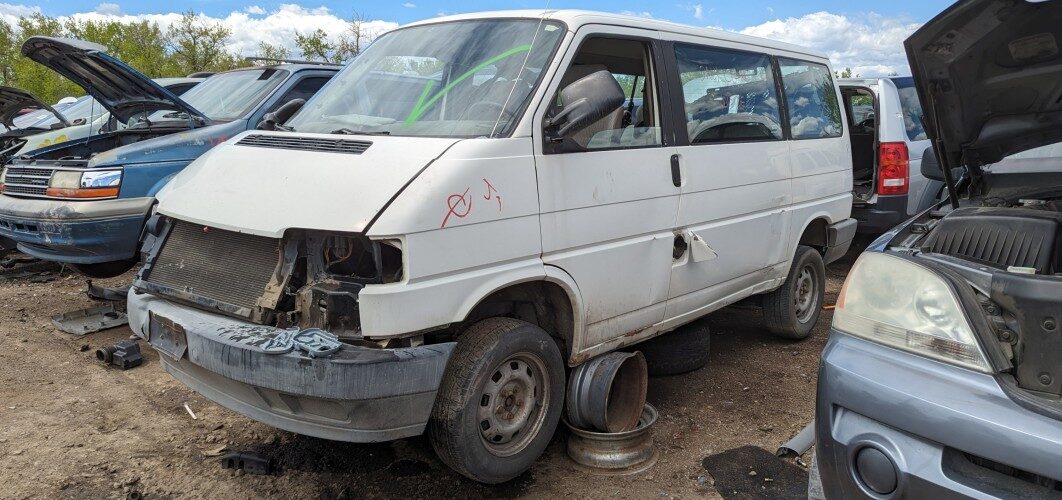The original North American Ford Escort was based (somewhat loosely) on its European cousin and was sold from the 1981 through 1990 model years. After that, the mighty Ford Empire turned to its Japanese ally, Mazda, for the Escort’s platform and that’s where it remained until the final ZX2 Escort coupes were sold here as 2003 models. I’ve neglected those early Mazda-based Escorts in this series up until now, so here’s one found in a Colorado car graveyard recently.

The U.S.-market Escort was available in wagon form from 1981 through 1999 model years. For 1993, the Escort wagon came only with the LX trim level and its MSRP was $10,367 (about $22,795 in 2024 dollars). It appears that this one started out at a dealership just outside of Kansas City.

A 1993 non-wagon Escort buyer getting the LX-E or GT models got a 1.8-liter DOHC Mazda four-cylinder rated at 127 horsepower, while all the other American Escorts that year came with this 1.9-liter Ford CVH and its 88 horses.

Wagons deserve manual transmissions, and that’s what this car has. A four-speed automatic was available in several option packages or as a standalone purchase for $732 ($1,610 after inflation).

This car was a platform sibling to the Mazda 323 aka Protegé, which made it a close cousin to the 1991-1994 Mercury Capri. Its Mercury-badged twin was the Tracer.

Station wagons were on their way out of favor with American consumers in 1993, nearly a decade after the first Chrysler minivans and Jeep XJ Cherokees appeared, two years after the debut of the Ford Explorer and the model year of the first Jeep Grand Cherokees. Three years later, the Toyota RAV4 showed up in the United States, followed by the Honda CR-V a year after that, ensuring that Escort-sized wagons didn’t have much longer to live on showroom floors.

This deeply offensive bumper sticker was the creation of the late Frank T. Kostecki, an Ohio fur trapper and businessman who owned Kosky’s Trading Post in Sullivan and offered a full line of stickers promoting the consumption of roadkill possum.

Ford still hadn’t gone to six-digit odometers on the Escort by the time this one was built, so we can’t know its final mileage total.
Your friendly Northwest Ford dealer would toss in air conditioning, AM/FM stereo and a luggage rack at no extra cost!








